Pro bike: Marco Pinotti's HTC-Columbia Scott Plasma 3
Wind tunnel-crafted shapes and an electronic brain
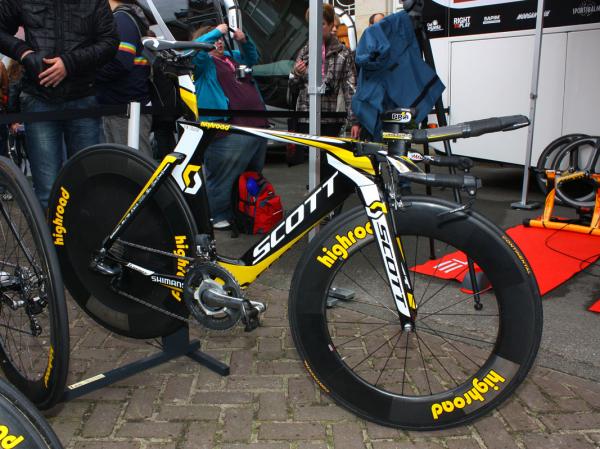
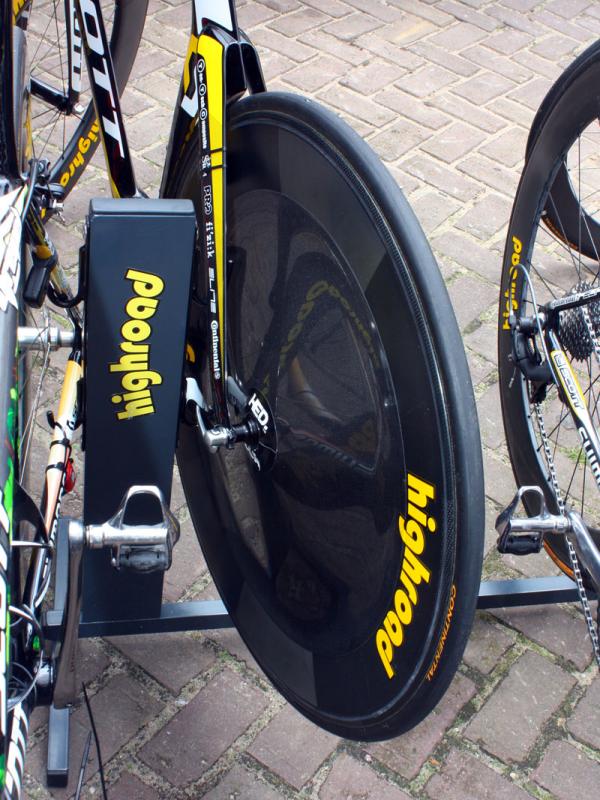
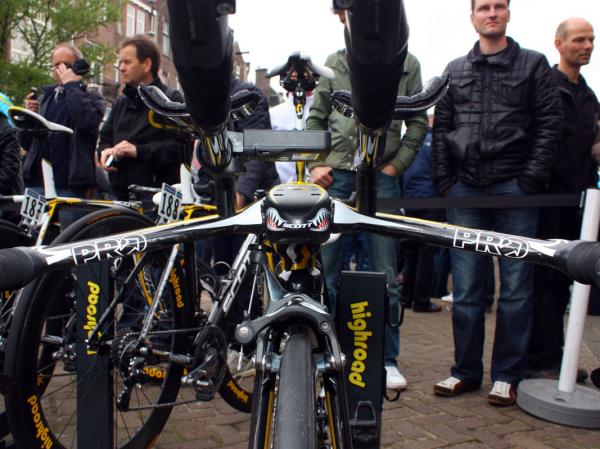
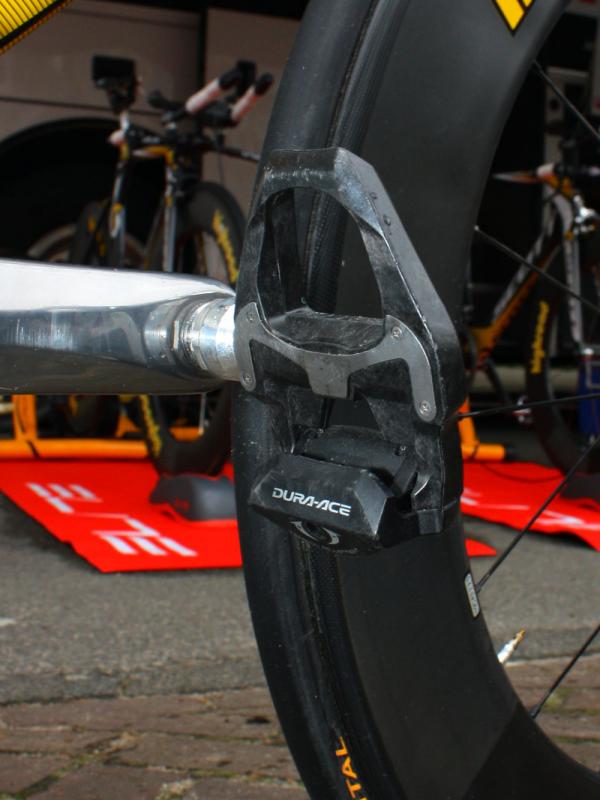
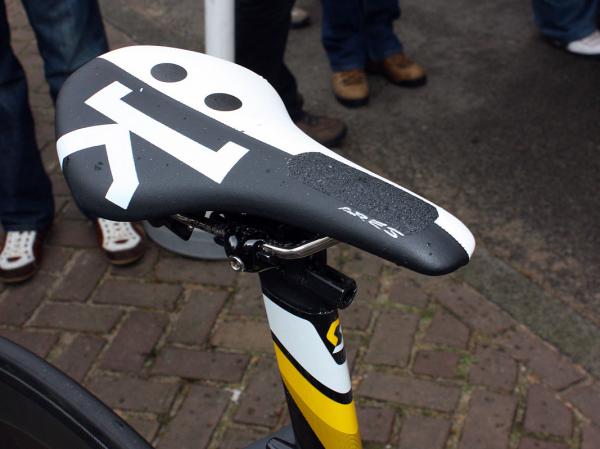
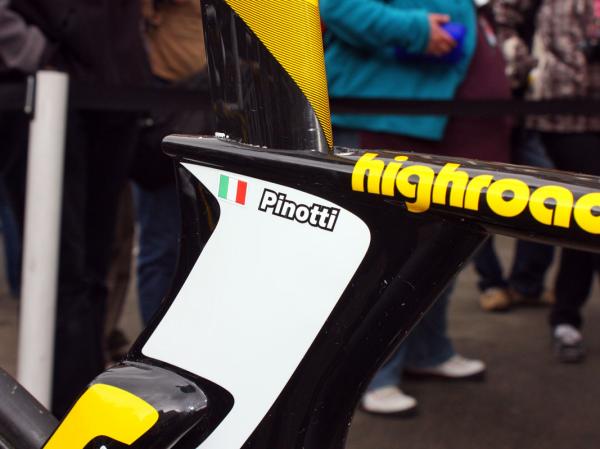
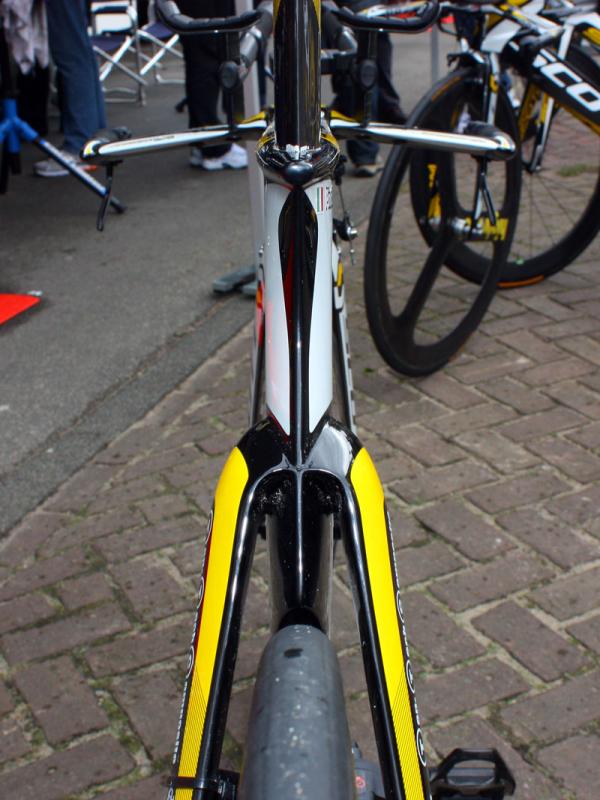
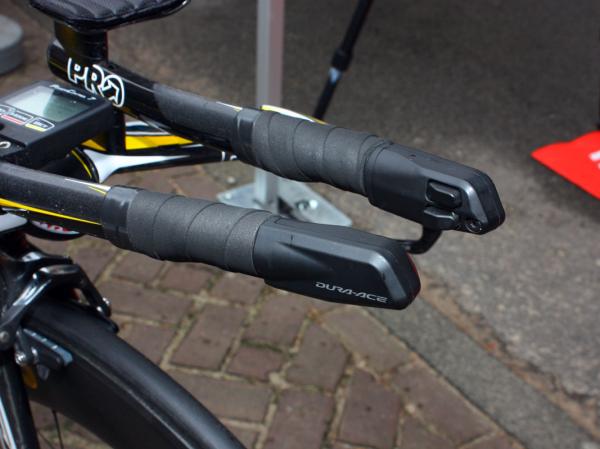
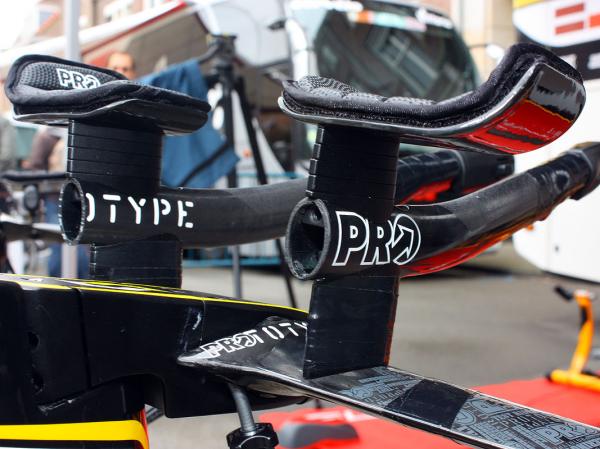
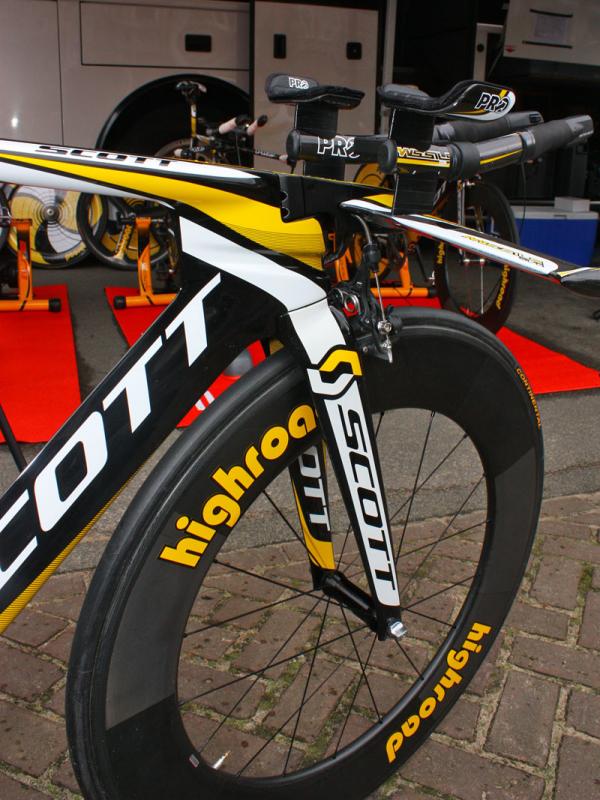
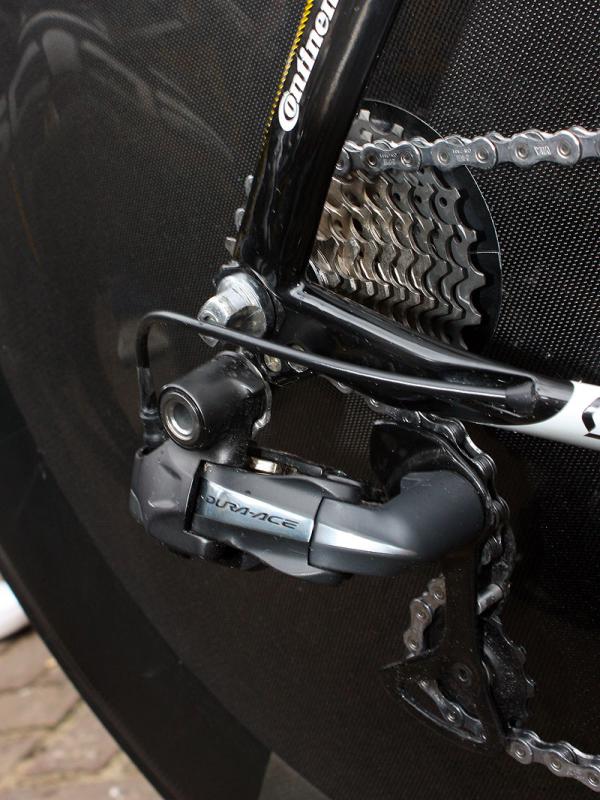
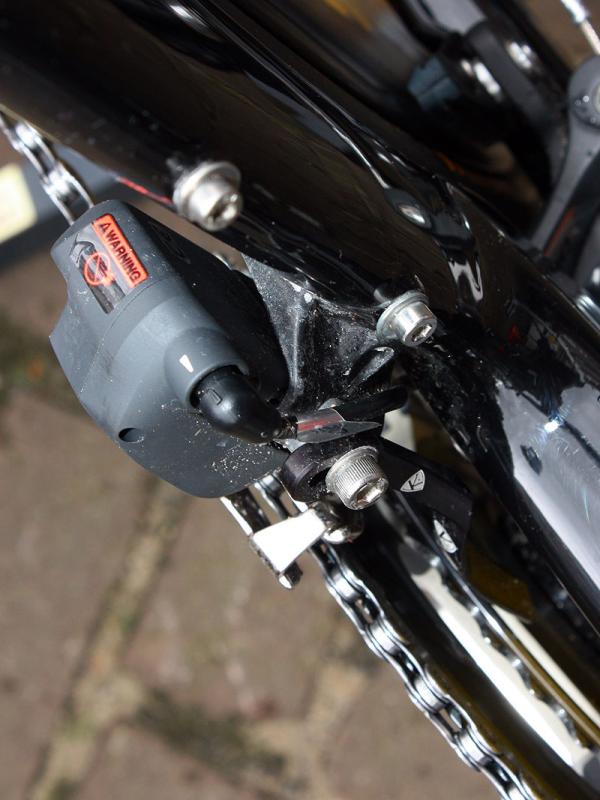
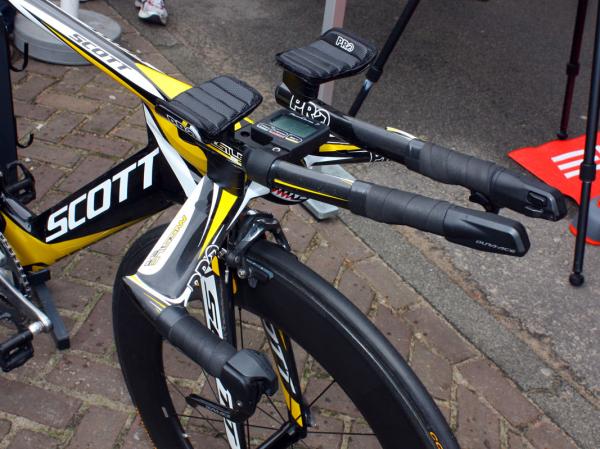
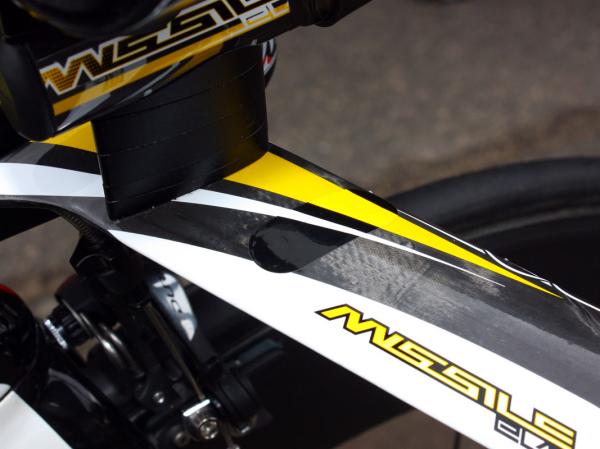
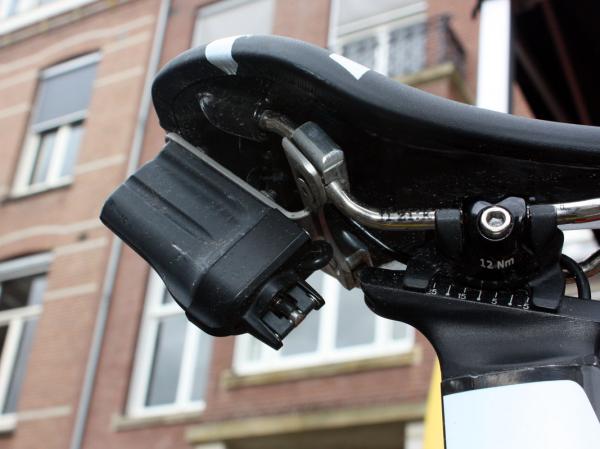
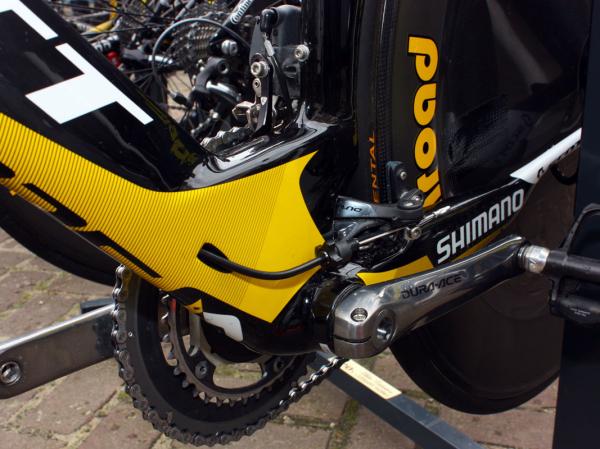
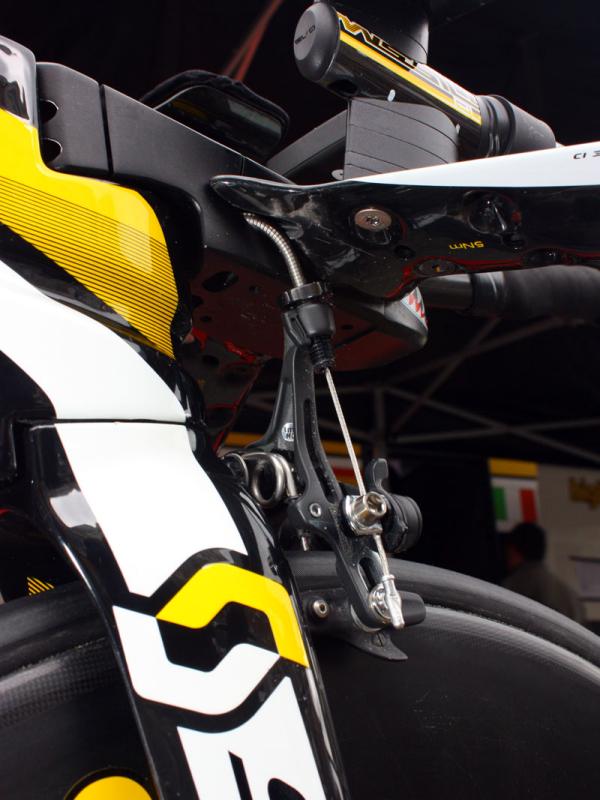
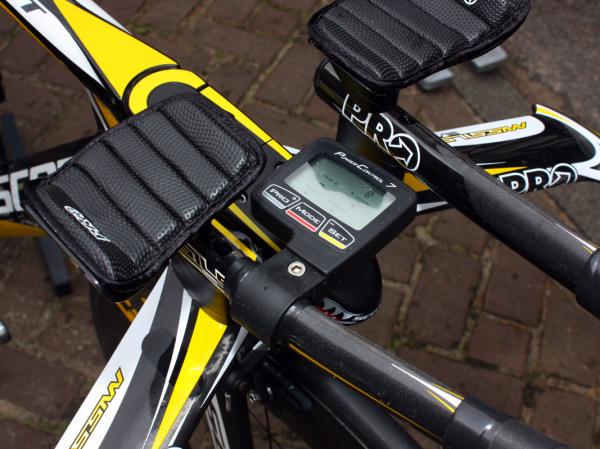
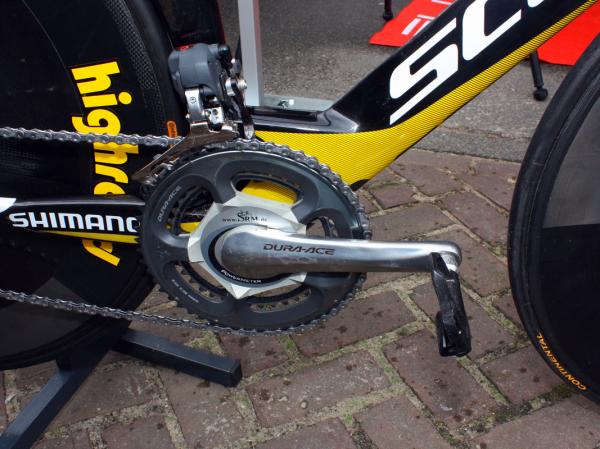
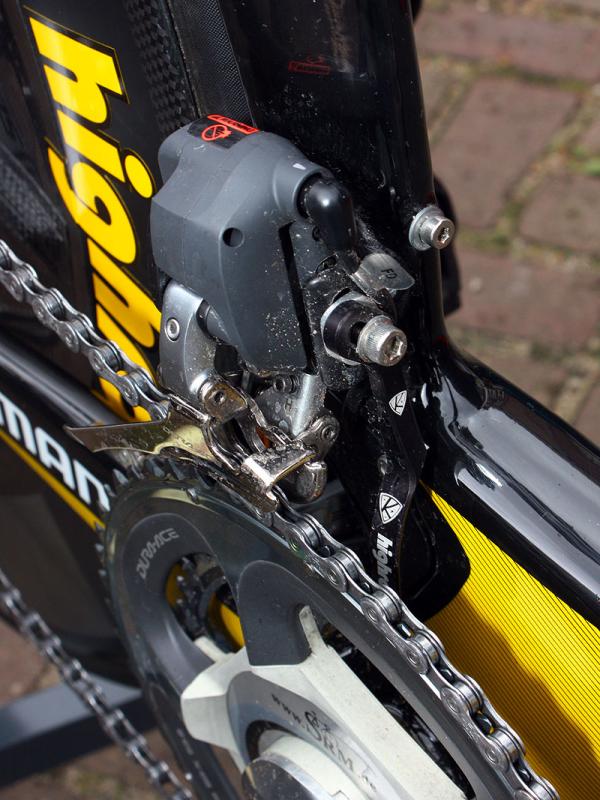
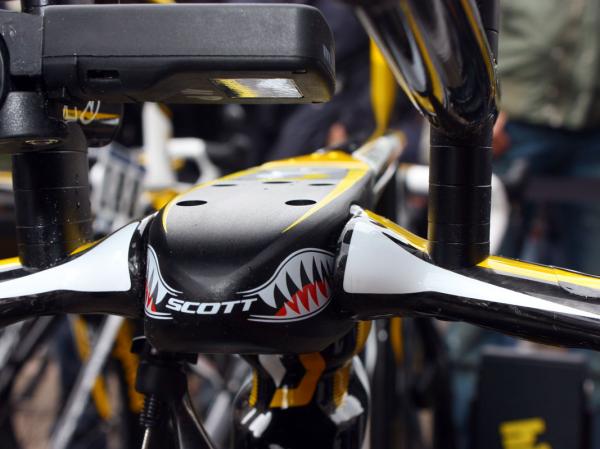
Team HTC-Columbia is again using Scott Bicycles' Plasma 3 for this year's Giro d'Italia time trials after first introducing the new shape to the public at last year's event. Crafted with the help of former Formula 1 aerodynamicist Simon Smart and his team at UK-based Velo Science, Scott says the striking shape is better suited to time trialing than the previous Plasma 2.
One of the biggest changes is the much lower front end, complete with a Missile Evo integrated aero bar from team sponsor PRO and a menacing-looking stem positioned directly inline with the top tube. Lots of customization is built into the bar design, too, with multiple mounting holes for the extensions and arm rests, independently adjustable extension and arm rest heights, and three stem lengths.
Here, four-time Italian national time trial champion Marco Pinotti apparently prefers his base bar grips fairly low but his extensions significantly higher with narrowly spaced (just 19cm) elbow pads to yield level forearms.
Rather than use a separate nose cone or fork/stem extension as seen on early prototypes, Scott has instead opted for a more traditional hourglass-profile head tube and internal fork steerer that still minimizes frontal area but avoids any conflicts with the UCI's technical guidelines. And in fact, Scott marketing and public relations director Adrian Montgomery says the company has actually provided the sport's governing body with technical drawings at multiple stages of development in order to guarantee compliance.
The seat cluster sports a deep-profile seat tube that closely shadows the rear wheel and widely spaced seat stays that leave lots of room for air to pass cleanly through. Also helping the aero cause is the relocation of the rear brake to down near the bottom bracket, which includes press-fit bearing cups and especially tall junctures with the enormous down tube to provide good pedaling efficiency.

The chain stays are uniquely shaped, too, starting out very tall and narrow at the bottom bracket and closely following the sides of the rear wheel before making a quick jog towards the rear-entry carbon dropouts.
Up top is a telescoping aero-profile proprietary carbon fiber seatpost, held in place with a well integrated binder (plus a bit of friction material wedged in between the post and frame) and capped with a fi'zi:k Ares TT-specific saddle.
Get The Leadout Newsletter
The latest race content, interviews, features, reviews and expert buying guides, direct to your inbox!
All of HTC-Columbia's Plasma 3s are fitted with Shimano's Dura-Ace Di2 electronic group, whose multiple shift button positions likely came in handy through some of the twists and turns on the road into Cuneo. Fully internal routing – even right through the Missile Evo's base bar, extensions, and stem – helps maintain the frame's clean lines, too, and the team has even developed its own under-saddle battery mount to keep it tucked out of the wind and easily accessible when it comes time to recharge the Li-ion cells.
For Wednesday's fast run into Cuneo, Pinotti ran HED wheels front and rear, including a Stinger Disc and deep-section Stinger 9 front tubular, and 22mm-wide Continental tubulars at both ends.
Complete bike specifications: